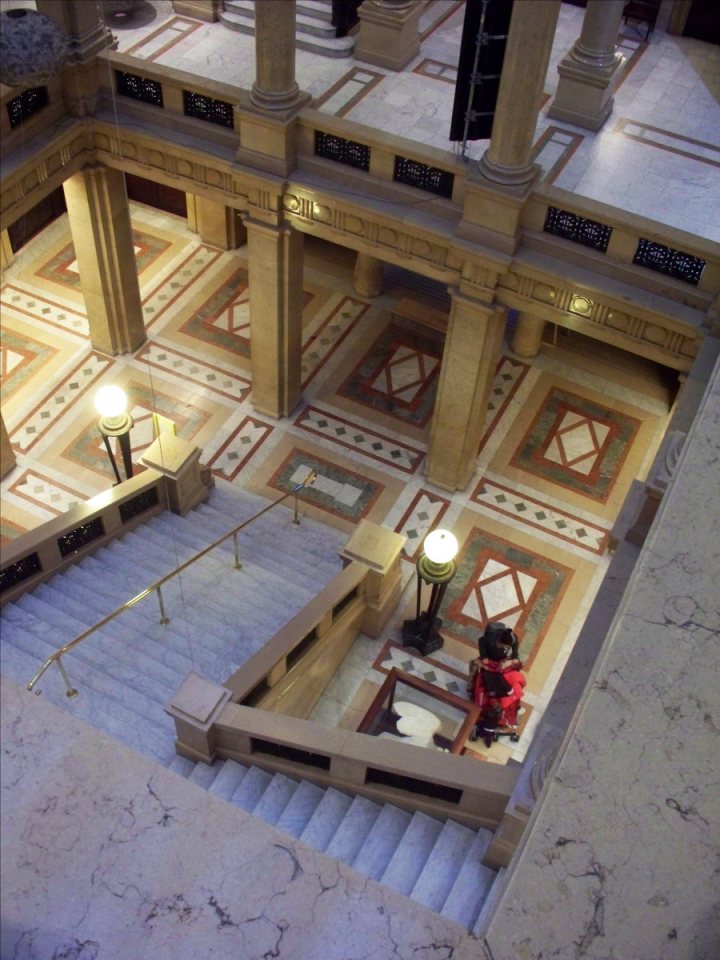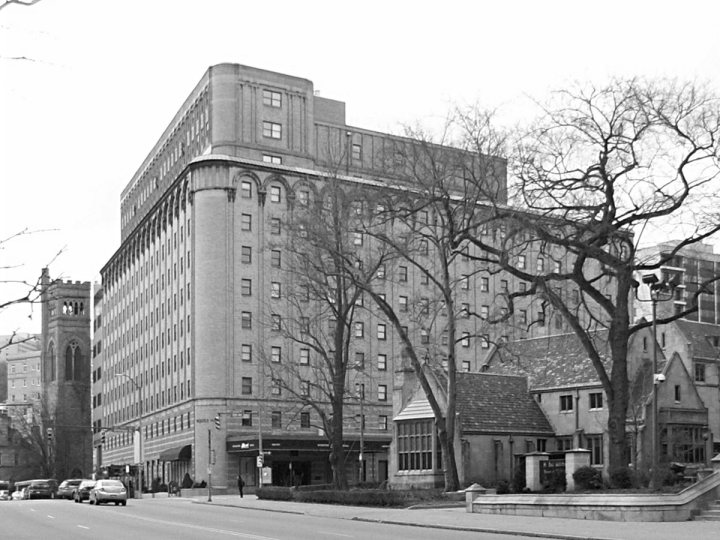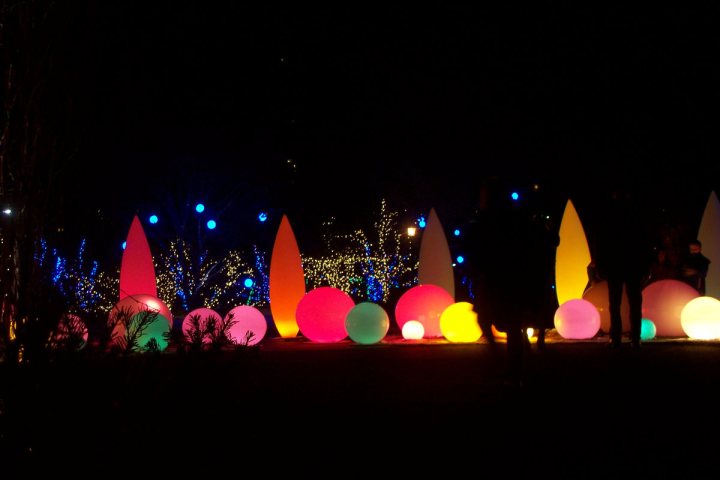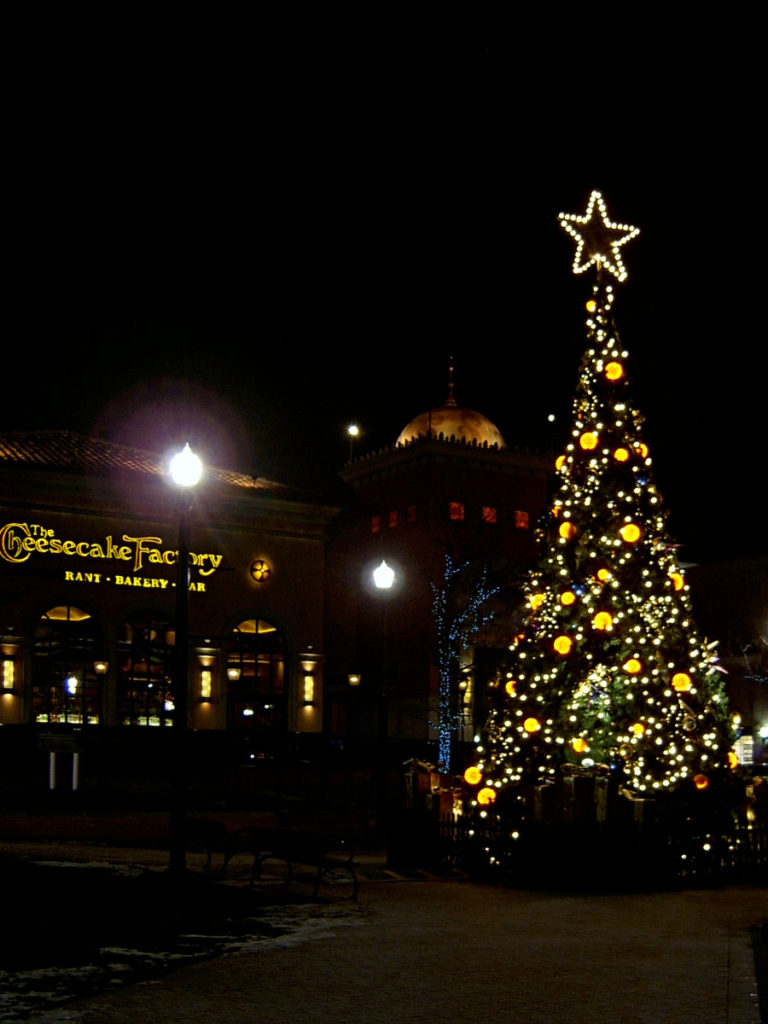Old Pa Pitt does not have an exact date for this old postcard, but it appears to be from about 1915 or so, to judge by the buildings. In those days, Pittsburgh was one of the three great homes of the skyscraper, along with New York and Chicago.
-
Grand Staircase, Carnegie Museum
The Grand Staircase is meant to be the main focal point of the museum, but the unsympathetic addition of the Scaife Galleries, with a new main entrance, makes the staircase something of a backwater. It’s still grand, however, even when overrun by the International. The murals are by John White Alexander.
-
St. Paul’s Cathedral
St. Paul’s Cathedral, the cathedral of the Roman Catholic Diocese of Pittsburgh, in the Fifth Avenue monumental district. (The Oakland neighborhood has at least three cathedrals—Roman Catholic, Greek Orthodox, and Antiochian Orthodox—or four if you count the Cathedral of Learning.) A cathedral is the architectural equivalent of a coral reef; over the centuries, it accumulates a diverse ecosystem of art and history. St. Paul’s is only a little over a century old, but it’s beginning to show signs of the rich diversity that only time can bring.
-
St. Paul
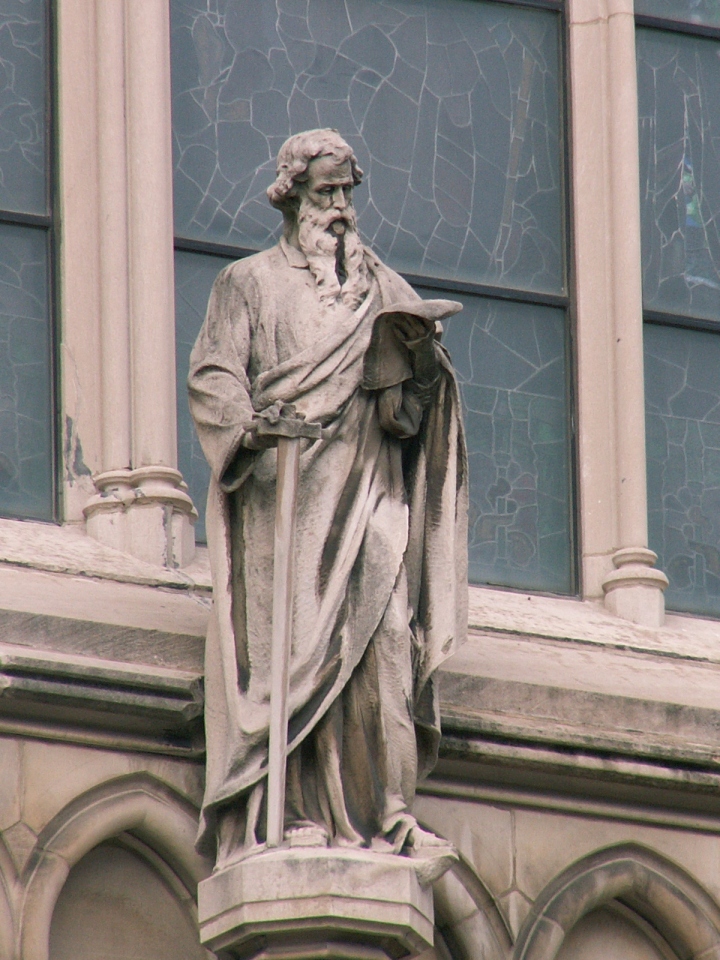 The statue of St. Paul (by Joseph Sibbel) over the main entrance to St. Paul’s Cathedral in Oakland. He is reading from, presumably, one of his own letters, and he casually holds the sword that beheaded him.
The statue of St. Paul (by Joseph Sibbel) over the main entrance to St. Paul’s Cathedral in Oakland. He is reading from, presumably, one of his own letters, and he casually holds the sword that beheaded him. -
Webster Hall
Webster Hall, built in 1926, was designed by Henry Hornbostel to be the grandest apartment block in the city of Pittsburgh. It still holds a prominent place in the Oakland monumental district, where Hornbostel contributed more buildings than any other architect.
One response
-
St. Mary’s Church, Sharpsburg
One response
-
Phipps Winter Light Show
The Winter Flower Show has always involved lights, but this year Phipps pulled out all the stops—especially in the outdoor garden, where glowing shapes constantly change colors.
-
Down the Rushy Glen
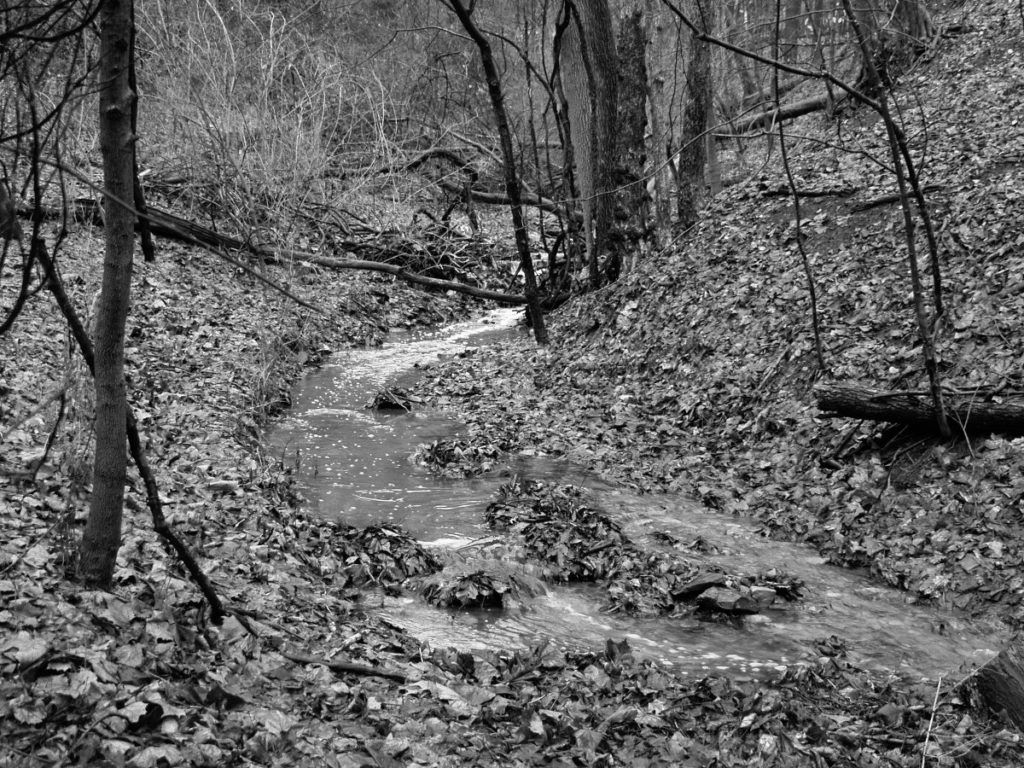
OLYMPUS DIGITAL CAMERA With warm temperatures and steady rains, streams are rushing and brooks are babbling.
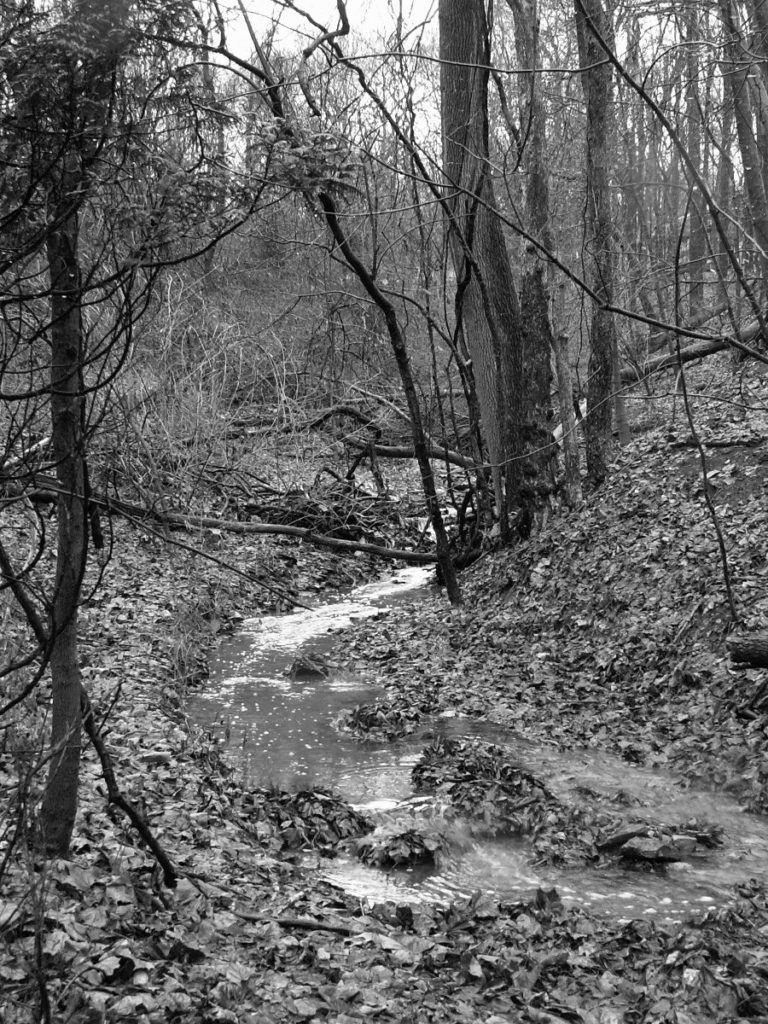
KONICA MINOLTA DIGITAL CAMERA -
St. Michael’s Cemetery
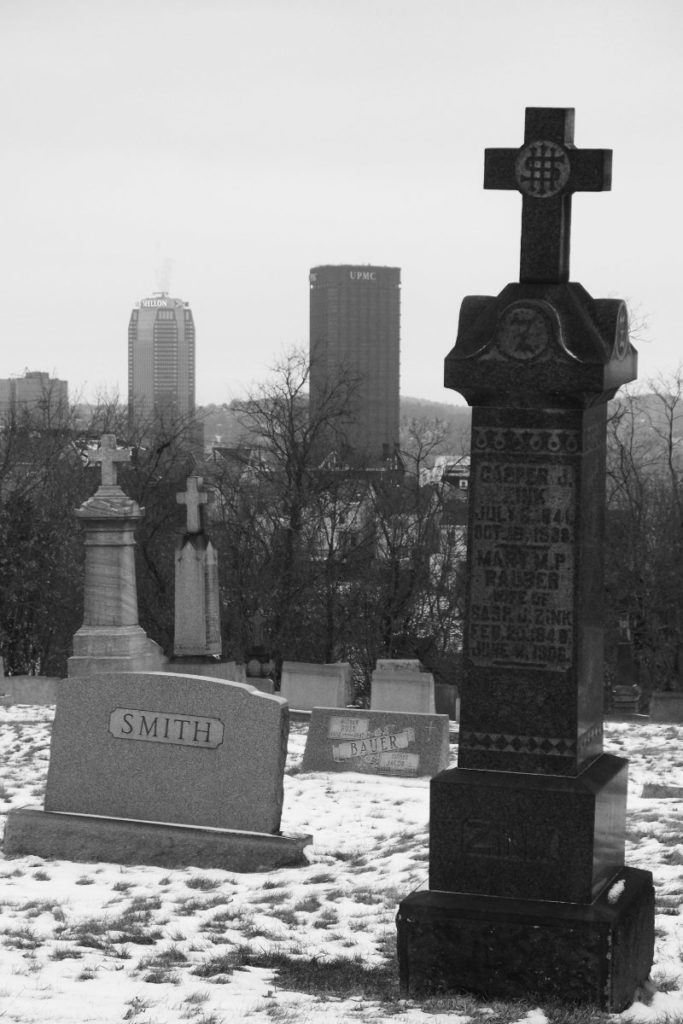
Downtown skyscrapers viewed from St. Michael’s Cemetery on the South Side Slopes. This picture is only as metaphorical as you want it to be.


